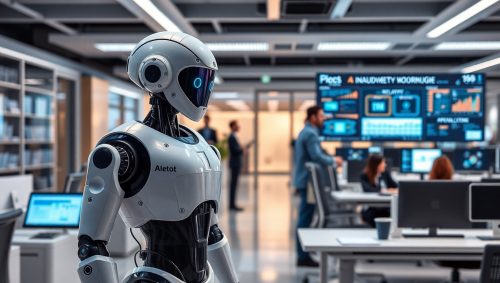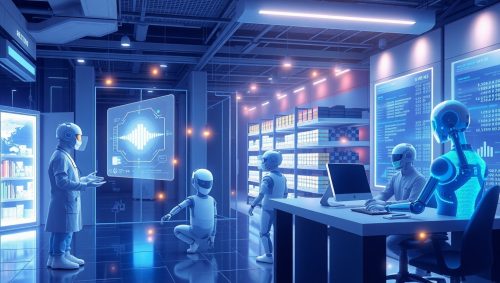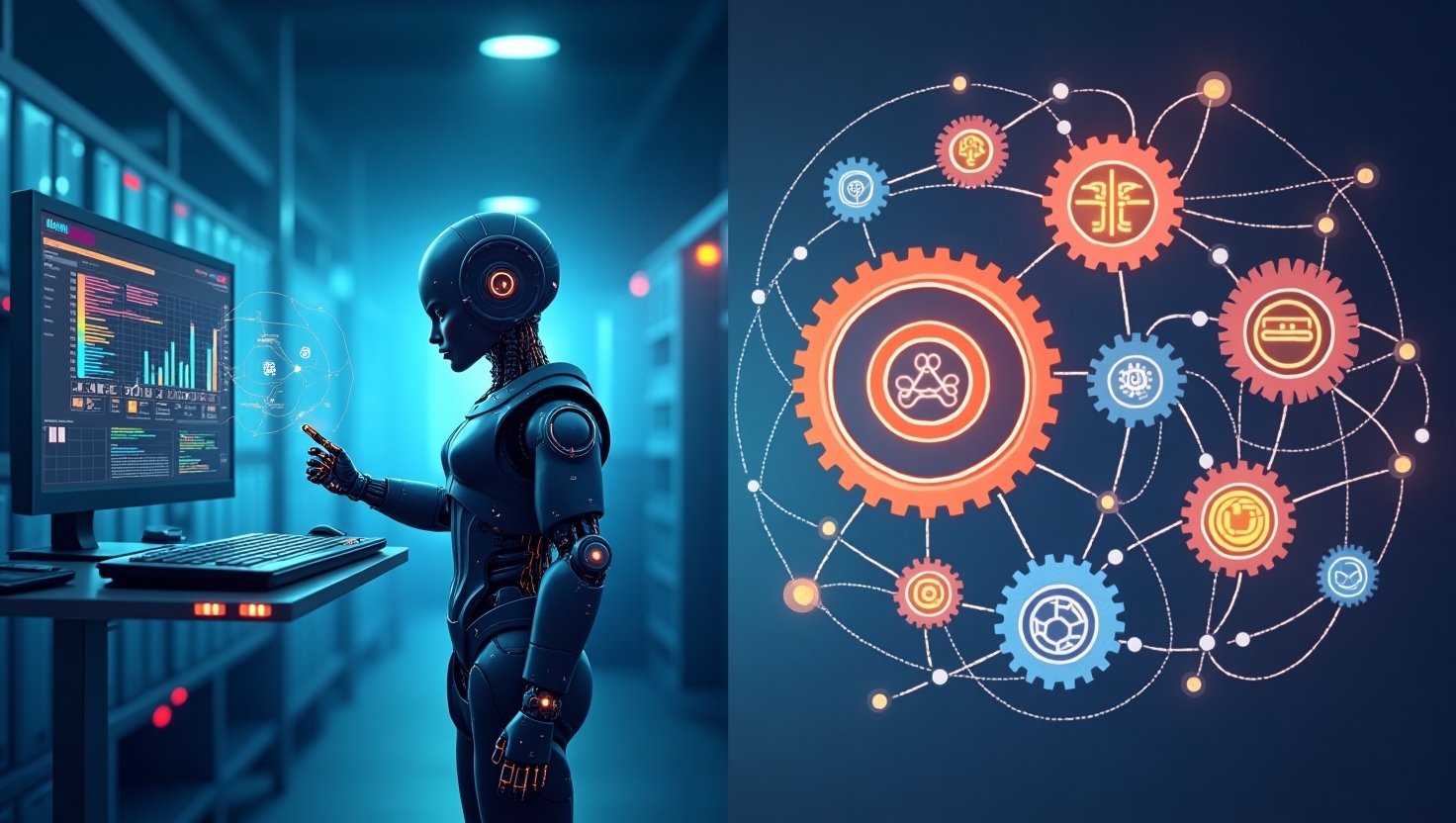In today’s fast-evolving digital landscape, businesses are increasingly turning to artificial intelligence (AI) to streamline operations and boost efficiency. But when it comes to implementing AI, two terms often create confusion: AI agents and AI workflows . What exactly do these terms mean, and how do they differ?
Understanding the distinction between AI agents and AI workflows is crucial for organizations looking to harness the full potential of automation. In this article, we’ll break down the key differences, explore their unique applications, and provide actionable insights to help you decide which approach suits your needs.
What Are AI Agents?

Definition and Key Characteristics
AI agents are autonomous systems designed to perform tasks with minimal human intervention. Think of them as intelligent team members who can think independently, adapt to new information, and make decisions based on real-time data.
Unlike traditional automation tools that follow rigid instructions, AI agents possess the ability to learn from interactions and improve over time.
For example, an AI agent in customer service might analyze a customer’s query, determine the appropriate response, and even escalate complex issues to a human representative—all without explicit programming for every possible scenario.
Types of AI Agents
There are several types of AI agents, each suited to specific use cases:
- Simple reflex agents : React to immediate inputs without considering past experiences.
- Model-based reflex agents : Use internal models to track the environment and make informed decisions.
- Goal-based agents : Focus on achieving predefined objectives.
- Learning agents : Continuously improve through machine learning algorithms.
- Utility-based agents : Maximize performance metrics like efficiency or cost-effectiveness.
- Hierarchical agents : Operate within structured layers of decision-making.
- Multi-agent systems : Collaborate with other agents to solve complex problems
These diverse capabilities make AI agents ideal for dynamic environments where adaptability and autonomy are critical.
What Are AI Workflows?

Definition and Key Characteristics
AI workflows, on the other hand, combine automation with artificial intelligence to handle specific tasks that require some level of intelligence or contextual understanding.
While they leverage AI to enhance decision-making, they still rely on predefined steps and Boolean logic to execute processes.
Imagine an AI workflow in marketing automation: It could analyze customer behavior, segment audiences, and trigger personalized email campaigns—but only within the boundaries set by its design.
How AI Workflows Differ from Traditional Automation
Traditional automation follows rigid rules and lacks flexibility. In contrast, AI workflows incorporate fuzzy logic, allowing them to handle more complex scenarios while maintaining structure. This blend of automation and intelligence makes AI workflows particularly effective for repetitive yet nuanced tasks.
Key Differences Between AI Agents and AI Workflows
1. Autonomy in Decision-Making
One of the most significant distinctions lies in their level of autonomy. AI agents can act independently, making decisions without constant human oversight.
For instance, an AI agent managing inventory might reorder supplies when stock levels drop below a certain threshold, adjusting quantities based on historical trends and seasonal demand.
In contrast, AI workflows operate within fixed parameters. They augment human decision-making rather than replacing it entirely. A workflow might flag anomalies in financial transactions but leave the final judgment to a human analyst.
2. Adaptability and Learning
AI agents excel at learning from interactions and adapting to new information. This makes them highly versatile in unpredictable environments. For example, a chatbot powered by an AI agent can refine its responses based on user feedback, becoming more accurate over time.
AI workflows, however, lack this adaptive capability. Once programmed, they stick to their defined logic unless manually updated. This limitation means they’re better suited for predictable, routine tasks.
3. Complexity and Scope
AI agents are designed for non-deterministic, adaptive tasks that require high levels of reasoning and problem-solving.
They thrive in situations where outcomes aren’t always clear-cut, such as fraud detection or supply chain optimization.
AI workflows, meanwhile, shine in deterministic scenarios with well-defined steps. Tasks like processing invoices or generating reports align perfectly with their strengths.
Real-World Applications
AI Agents in Action
- Healthcare : AI agents assist doctors by analyzing patient data, recommending treatments, and monitoring recovery progress.
- Retail : Autonomous robots manage warehouse operations, optimizing storage and retrieval processes.
- Finance : AI agents detect fraudulent activities by identifying unusual patterns in transaction data.
AI Workflows in Practice
- Marketing : AI workflows automate lead nurturing, delivering targeted content to prospects at the right time.
- HR : Recruitment platforms use AI workflows to screen resumes, schedule interviews, and onboard new hires.
- Manufacturing : Predictive maintenance systems monitor equipment health, triggering alerts before breakdowns occur.
Why Does This Matter?
As businesses strive to stay competitive, choosing the right technology becomes paramount. Implementing AI agents or AI workflows depends on your organization’s goals, resources, and operational complexity. By understanding their differences, you can align your strategy with the solution that delivers maximum value.
Actionable Takeaways
- Assess Your Needs : Evaluate whether your challenges involve predictable, repetitive tasks (ideal for AI workflows) or dynamic, unpredictable scenarios (better suited for AI agents).
- Start Small : Pilot projects allow you to test both approaches before scaling up.
- Invest in Training : Equip your team with the skills needed to manage and optimize AI technologies.
- Monitor Performance : Regularly review results to ensure alignment with business objectives.
FAQs About AI Agents and AI Workflows
Q1: Can AI agents replace human workers?
While AI agents can handle many tasks autonomously, they’re not designed to fully replace humans. Instead, they complement human efforts by taking over mundane or dangerous jobs, freeing employees to focus on creative and strategic initiatives.
Q2: Are AI workflows easier to implement than AI agents?
Yes, AI workflows tend to be simpler because they build upon existing automation frameworks. However, integrating advanced AI features may require additional expertise.
Q3: Which industries benefit most from AI agents?
Industries like healthcare, finance, logistics, and retail see significant gains from AI agents due to their ability to handle complex, evolving challenges.
Q4: Do AI workflows support customization?
Absolutely! AI workflows can be tailored to meet specific business requirements, ensuring they fit seamlessly into existing processes.
Q5: How do I measure the ROI of AI agents vs AI workflows?
Track metrics such as productivity improvements, error reduction, and cost savings. Compare these against implementation costs to gauge overall impact.
Conclusion
The debate between AI agents and AI workflows isn’t about which is superior—it’s about finding the right tool for the job. As automation continues to reshape industries, organizations must weigh the benefits of autonomy versus structured efficiency. Whether you opt for the independent thinking of AI agents or the guided precision of AI workflows, one thing is clear: Embracing AI is no longer optional—it’s essential.
Ready to transform your business with AI? Explore our resources on implementing cutting-edge solutions or contact us today to discuss your unique needs!

